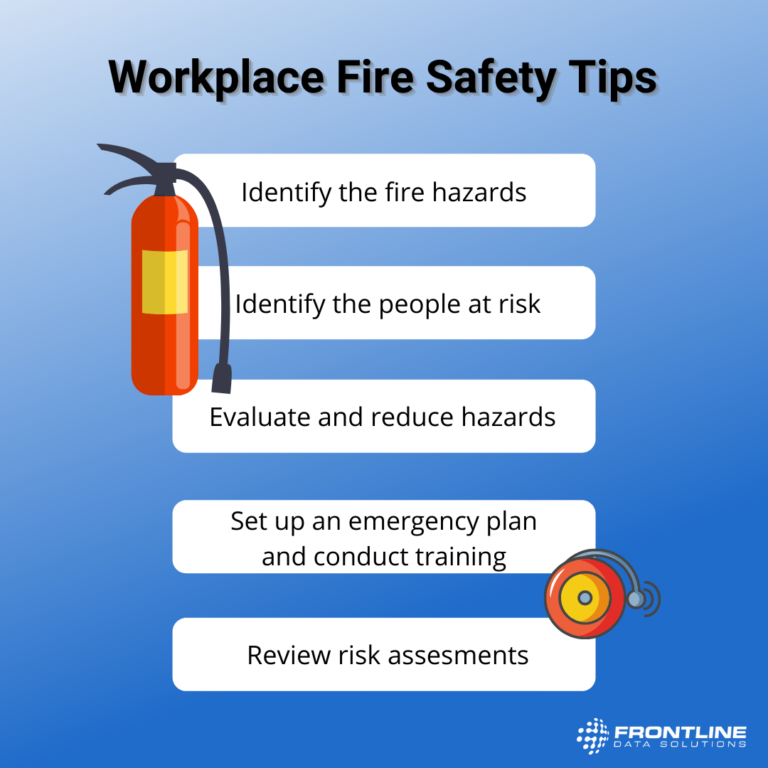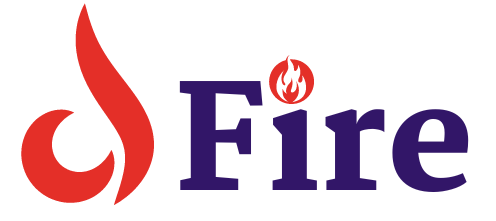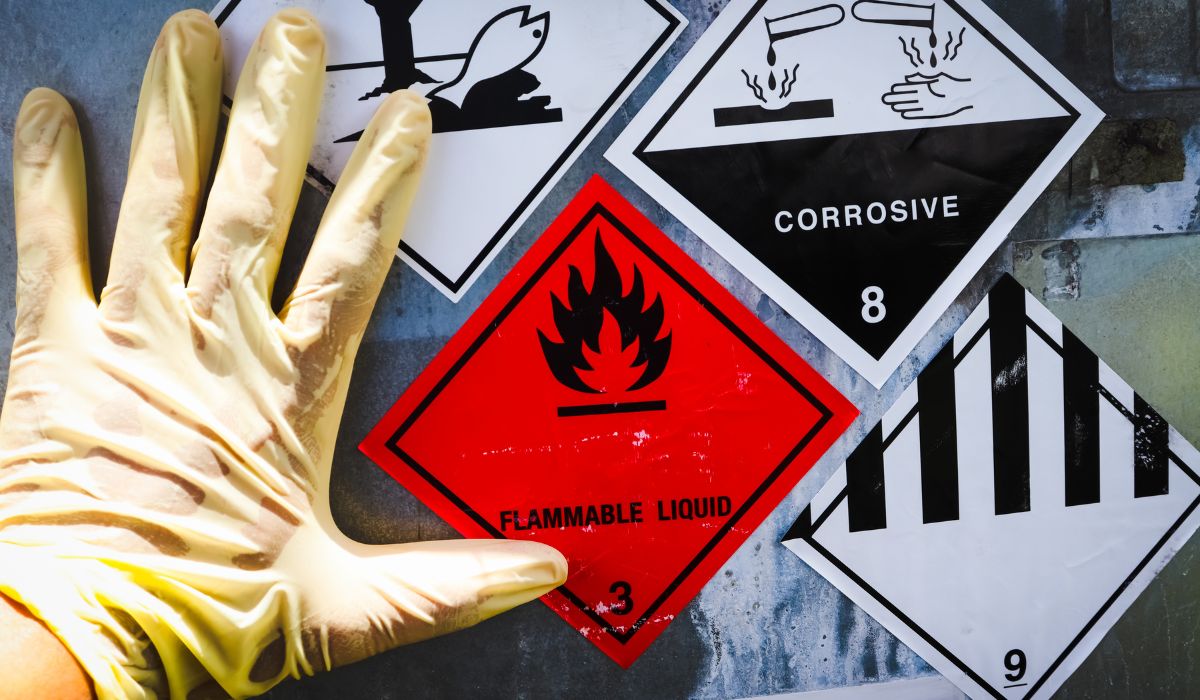Hazard fire and safety involve identifying fire risks and implementing measures to prevent and respond to fires. They ensure workplace safety and compliance with regulations.
Fire safety is crucial for protecting lives and property. Effective hazard fire and safety practices include risk assessments, proper fire extinguisher placements, and regular fire drills. Educating employees on fire prevention and response can significantly reduce the risk of fires.
Installing smoke detectors and maintaining clear evacuation routes are essential steps. Regularly inspecting electrical systems and ensuring proper storage of flammable materials also contribute to a safer environment. Adhering to fire safety regulations protects individuals and minimizes potential financial losses. Prioritizing fire safety can create a secure, compliant, and prepared workplace.
What is a Fire Hazard?
A fire hazard is any condition that increases the likelihood of a fire starting or intensifying. These hazards can be categorized into three main types:
- Combustible Materials: Flammable materials such as paper, wood, cloth, and certain chemicals can easily ignite when exposed to heat or flames.
- Electrical Hazards: Faulty wiring, overloaded circuits, and malfunctioning electrical appliances can cause short circuits or sparks, which can lead to a fire.
- Heat Sources: Open flames, heating systems, or poorly maintained equipment can serve as ignition sources, turning a minor incident into a major fire.
Identifying and mitigating these hazards is the first step toward improving fire safety.
Importance Of Fire Safety
Fire safety is crucial for protecting lives and property. Understanding fire risks and taking preventive measures can save lives. Fire safety also reduces the damage caused by fires.
Why Fire Safety Matters
Fires can occur at any time and place. They can cause severe injuries and even death. Fire safety helps in reducing these risks. It ensures that everyone knows what to do in case of a fire. This preparedness can make a significant difference.
Fire safety also helps in preserving property. Fires can destroy homes, businesses, and important documents. By being aware of fire safety measures, the chances of such losses decrease.
Statistics On Home Fires
Home fires are more common than people think. According to the National Fire Protection Association (NFPA), there are about 350,000 home fires each year in the United States. These fires cause around 2,620 deaths and 11,000 injuries annually.
| Year | Number of Home Fires | Deaths | Injuries |
|---|---|---|---|
| 2018 | 379,600 | 2,790 | 11,525 |
| 2019 | 374,000 | 2,770 | 11,650 |
| 2020 | 356,500 | 2,580 | 11,075 |
These numbers show how serious home fires can be. It is essential to be proactive about fire safety. Simple measures like installing smoke alarms and having a fire escape plan can make a big difference.
- Install smoke alarms on every level of your home.
- Test alarms monthly and replace batteries yearly.
- Have a fire escape plan and practice it regularly.
- Keep fire extinguishers accessible and know how to use them.

Credit: www.fldata.com
Identifying Fire Hazards
Understanding potential fire hazards can prevent disasters. Many fire hazards exist in homes. Knowing these risks keeps families safe.
Common Household Hazards
Many household items can start fires. Here are some common hazards:
- Candles: Never leave them unattended. They can easily tip over.
- Cooking Equipment: Stovetops and ovens can ignite fires. Always monitor them.
- Heating Appliances: Keep them away from flammable materials.
- Matches and Lighters: Store them out of children’s reach.
- Smoking Materials: Always extinguish cigarettes properly.
Electrical Fire Risks
Faulty electrical systems cause many house fires. Be aware of these risks:
| Risk | Description |
|---|---|
| Overloaded Outlets | Too many plugs can cause overheating. |
| Frayed Wires | Damaged wires can spark and ignite. |
| Faulty Appliances | Old or malfunctioning devices can start fires. |
| Extension Cords | Improper use can lead to overheating. |
Regularly check electrical systems. Replace damaged items immediately.
Fire Prevention Tips
Fires can cause severe damage and pose serious risks to life and property. By following fire prevention tips, you can reduce these risks. Here are some essential tips to keep your home safe from fire hazards.
Safe Cooking Practices
Cooking is a leading cause of home fires. Follow these safe cooking practices to prevent accidents:
- Stay in the kitchen when cooking on the stovetop.
- Keep flammable items away from the stove.
- Use a timer to remind you of cooking times.
- Turn pot handles inward to avoid spills.
- Keep a lid nearby to smother small grease fires.
Proper Use Of Heaters
Heaters can be a fire hazard if not used properly. Here are some tips for the proper use of heaters:
- Keep heaters at least 3 feet away from flammable items.
- Use heaters with automatic shut-off features.
- Plug heaters directly into a wall outlet, not an extension cord.
- Turn off heaters when you leave the room or go to bed.
- Regularly inspect heaters for any damage or malfunction.
By following these fire prevention tips, you can significantly reduce the risk of fire in your home. Stay vigilant and stay safe!

Installing Smoke Alarms
Smoke alarms are essential for home safety. They provide early warnings of fire, giving you time to escape. Proper installation is crucial to ensure these devices work correctly. In this section, we will discuss the best locations for installing smoke alarms and the importance of regular maintenance and testing.
Best Locations For Alarms
Placing smoke alarms in the right spots can save lives. Here are the best locations:
- Bedrooms: Install alarms inside each bedroom to alert sleeping occupants.
- Hallways: Place alarms in hallways outside sleeping areas.
- Kitchen: Avoid installing alarms in the kitchen due to false alarms. Place them nearby instead.
- Living Room: Install alarms in living rooms or dens.
- Basements: Place alarms in basements, especially near stairways.
Follow these guidelines to maximize safety:
- Install alarms on every level of your home.
- Place alarms at least 10 feet from cooking appliances.
- Mount alarms high on walls or ceilings.
- Avoid installing alarms near windows, doors, or ducts.
Maintenance And Testing
Regular maintenance ensures smoke alarms function properly. Follow these steps:
| Task | Frequency |
|---|---|
| Test alarms | Monthly |
| Replace batteries | Annually |
| Clean alarms | Every six months |
| Replace alarms | Every 10 years |
To test your smoke alarms:
- Press the test button on the alarm.
- Listen for the loud beep.
- If there is no sound, replace the batteries.
- If the alarm still doesn’t work, replace the unit.
Cleaning your smoke alarms is also important:
- Use a vacuum to remove dust from vents.
- Wipe the exterior with a damp cloth.
Remember, working smoke alarms save lives. Could you keep them in top condition?
Creating An Evacuation Plan
Having an evacuation plan can save lives during a fire. It helps everyone know what to do and where to go. This plan ensures safety for you and your family.
Planning Escape Routes
Plan at least two escape routes from each room. These routes should lead to a safe area outside.
- Draw a map: Show all rooms and exits in your house.
- Mark exits: Highlight doors and windows that can be used.
- Check accessibility: Ensure everyone can use the exits, including children and elderly.
Escape routes must be clear of obstacles. Do not block doors or windows. Make sure everyone knows the paths. Practice using these routes often.
Family Fire Drills
Fire drills help you practice your evacuation plan. Hold a drill at least twice a year.
- Set a date: Choose a day and time for the drill.
- Sound the alarm: Use your smoke alarm to start the drill.
- Follow the plan: Use your escape routes to leave the house.
- Meet at a safe spot: Go to a designated meeting place outside.
After the drill, talk about what went well. Discuss any problems faced. Make changes to your plan if needed. Keep practicing until everyone is confident.
Using Fire Extinguishers
Knowing how to use a fire extinguisher is crucial. It can save lives and property. This section covers the types of extinguishers and proper usage techniques. Learn these basics to be prepared during an emergency.
Types Of Extinguishers
Fire extinguishers come in different types. Each type is designed for specific kinds of fires. Here are the common types:
| Type | Uses |
|---|---|
| Class A | Fires involving ordinary combustibles like wood, paper, and cloth. |
| Class B | Fires involving flammable liquids like gasoline, oil, and grease. |
| Class C | Fires involving electrical equipment and appliances. |
| Class D | Fires involving combustible metals like magnesium and titanium. |
| Class K | Fires involving cooking oils and fats, typically in kitchens. |
Proper Usage Techniques
Using a fire extinguisher correctly is vital. Follow these steps:
- Pull the pin: This breaks the tamper seal.
- Aim the nozzle: Point it at the base of the fire.
- Squeeze the handle: This releases the extinguishing agent.
- Sweep side to side: Cover the area until the fire is out.
Remember the acronym PASS: Pull, Aim, Squeeze, Sweep. This helps you recall the steps during an emergency.
- Stand 6-8 feet away from the fire.
- Ensure you have a clear escape route.
- Never turn your back on a fire.
Practice these steps with a professional. This ensures you are prepared and confident.
Handling Flammable Materials
Handling flammable materials requires utmost caution. Proper handling can prevent serious accidents. This section covers safe storage tips and disposal of hazardous items. Follow these guidelines to ensure safety.
Safe Storage Tips
Storing flammable materials safely is crucial. Here are some tips:
- Keep away from heat: Store materials in a cool, dry place.
- Use proper containers: Always use containers designed for flammable substances.
- Label containers clearly: Ensure all containers have clear labels.
- Limit quantities: Only store the amount you need.
- Ventilate storage areas: Ensure good airflow in storage areas.
Disposal Of Hazardous Items
Disposing of hazardous items correctly is essential. Follow these steps:
- Identify the material: Know what you are disposing of.
- Follow local regulations: Check local disposal rules.
- Use appropriate disposal methods: Use methods suitable for the material.
- Wear protective gear: Always use gloves and masks.
- Do not mix materials: Keep different materials separate.
Below is a table summarizing the storage and disposal tips:
| Tips | Details |
|---|---|
| Keep away from heat | Store in a cool, dry place |
| Use proper containers | Containers designed for flammables |
| Label containers clearly | Ensure clear labels on all containers |
| Limit quantities | Store only what is needed |
| Ventilate storage areas | Ensure good airflow |
| Identify the material | Know what you are disposing of |
| Follow local regulations | Check local disposal rules |
| Use appropriate disposal methods | Use methods suitable for the material |
| Wear protective gear | Use gloves and masks |
| Do not mix materials | Keep different materials separate |
Post-fire Recovery
After experiencing a fire, the recovery process can be overwhelming. Knowing the right steps to take can ease the burden and ensure safety. This section will guide you through the immediate steps and the importance of contacting your insurance.
Immediate Steps To Take
Here are the immediate actions to ensure safety and begin recovery:
- Ensure Safety: Make sure everyone is safe and unharmed.
- Do Not Enter: Avoid entering the building until it is declared safe.
- Call Emergency Services: Contact the fire department to report the fire.
- Seek Medical Attention: Visit a doctor for any injuries.
- Document Damage: Take photos and videos of the damage.
These steps help in managing the aftermath and securing your home.
Contacting Insurance
Contacting your insurance company is crucial for recovery. Here are the steps to follow:
- Notify Your Insurer: Call your insurance company immediately.
- Provide Details: Give them all details about the fire incident.
- Submit Documentation: Share photos, videos, and a list of damaged items.
- Meet Adjuster: Schedule a meeting with the insurance adjuster.
- Follow Up: Regularly check the status of your claim.
These actions help in speeding up the recovery process and getting the necessary support.
How to Improve Hazard Fire and Safety in the Workplace
Businesses, in particular, have a responsibility to implement hazard fire and safety protocols. Here are some additional steps to improve fire safety in the workplace:
- Clear Emergency Exits: Ensure all emergency exits are clearly marked, unobstructed, and easily accessible.
- Proper Storage of Flammable Materials: Store chemicals and other flammable materials in appropriate containers, away from heat sources.
- Electrical Safety Measures: Inspect electrical systems regularly to prevent issues like overheating, frayed wires, or overloaded circuits.
- Regular Inspections: Schedule routine fire safety inspections and equipment checks to maintain compliance with safety standards.
Frequently Asked Questions
What Are Common Fire Hazards At Home?
Common fire hazards at home include faulty electrical wiring, unattended cooking, and flammable materials. Regularly check smoke detectors and fire extinguishers.
How Can I Prevent Kitchen Fires?
Prevent kitchen fires by never leaving cooking unattended. Keep flammable items away from stovetops. Always have a fire extinguisher nearby.
What Should I Do During A Fire Emergency?
During a fire emergency, exit the building immediately. Call emergency services once you are safe. Do not re-enter until it’s declared safe.
How Often Should I Check Smoke Detectors?
Check smoke detectors monthly to ensure they are working properly. Replace batteries at least once a year.
Conclusion
Prioritizing fire safety and hazard prevention is crucial for protecting lives and property. Implementing proper measures can reduce risks significantly. Regular training and maintenance ensure preparedness. Stay vigilant and informed to maintain a safe environment. Embrace these practices to safeguard your surroundings effectively and responsibly.

I’m Abdus Sobur, a highly skilled and professional Fire Safety Officer with a passion for safeguarding lives and property. Over the course of my career, I’ve conducted numerous successful fire safety audits, earning a reputation for excellence in ensuring public safety.
In addition to my role as a Fire Safety Officer, I’m also dedicated to raising awareness about the importance of fire safety. Through my blog, I share insights into the functions of different fire safety equipment, aiming to empower individuals with the knowledge they need to protect themselves and their communities.
I’m driven by a deep commitment to promoting fire safety awareness and preventing fire-related incidents.

